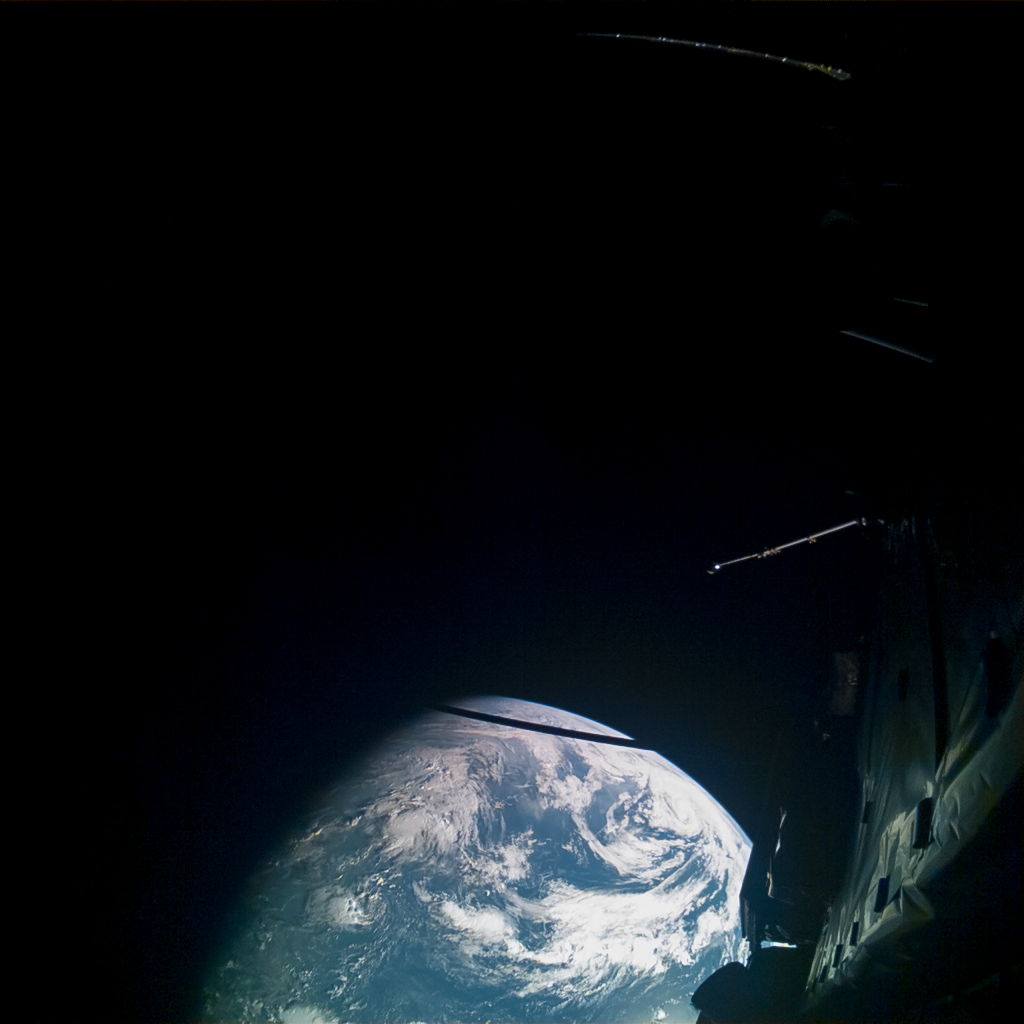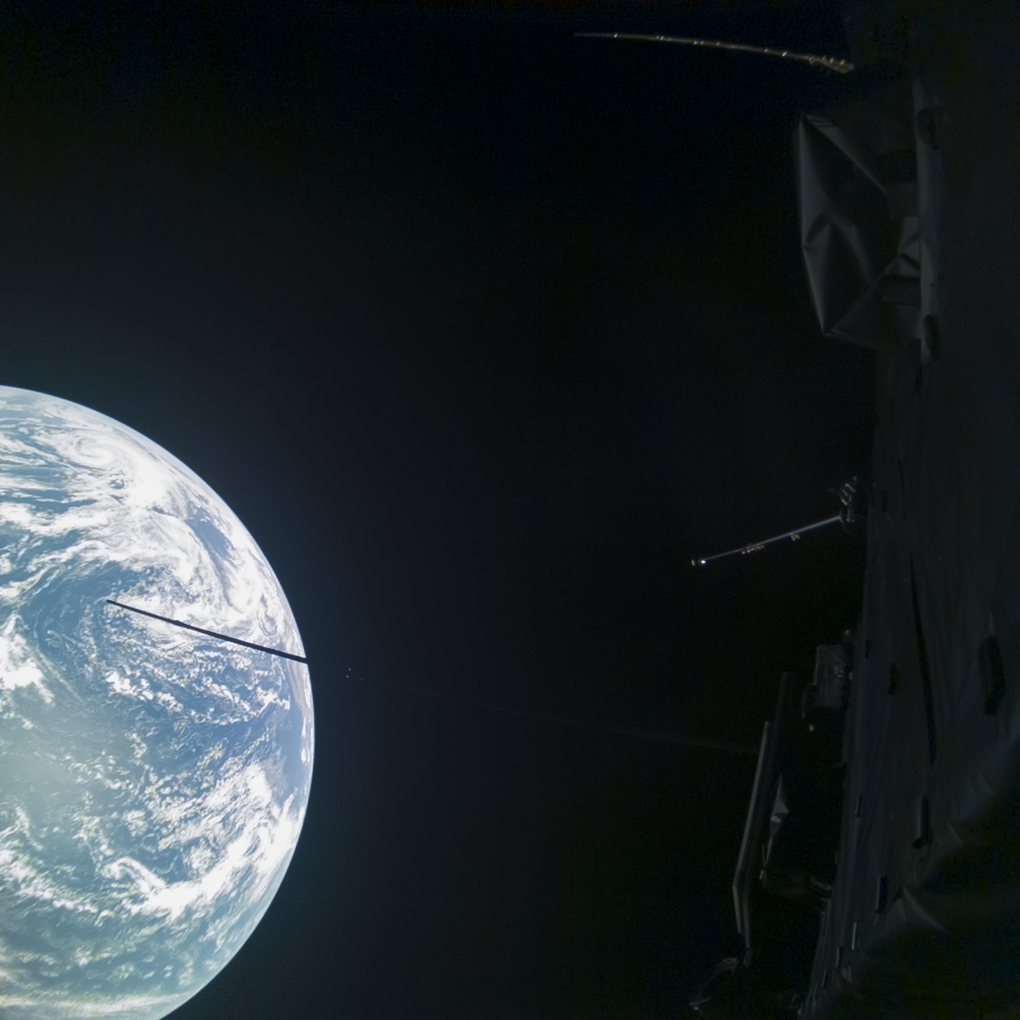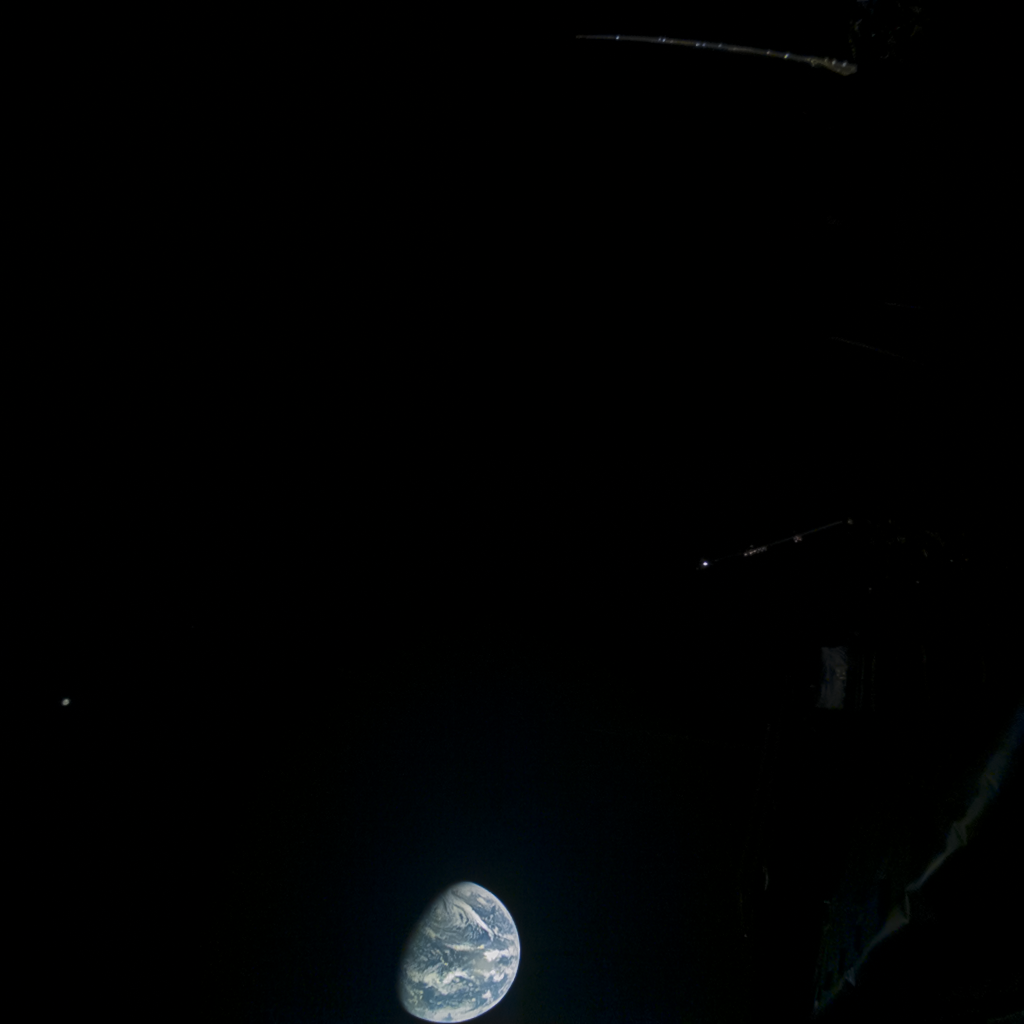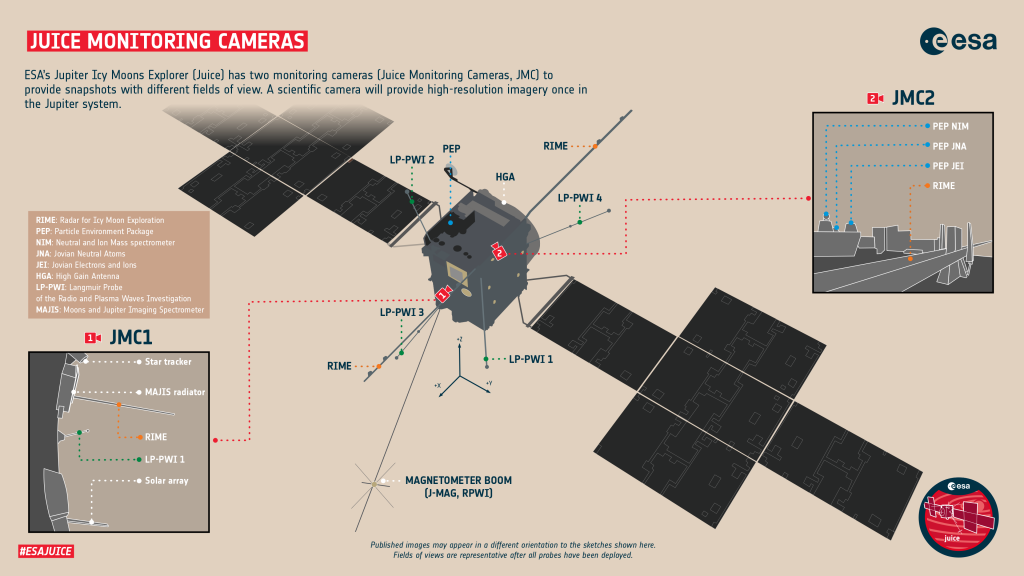During the second step of humankind’s first-ever lunar-Earth flyby, ESA’s Jupiter Icy Moons Explorer (Juice) mission captured stunning views of its home planet.
Juice took these images with its onboard monitoring cameras during the night of 20—21 August (CEST), around the time of its closest approach to Earth.
This successful double flyby of the Moon and Earth has redirected Juice’s path through space to put it on course for a flyby of Venus in August 2025.
The first image below was taken by Juice monitoring camera 1 (JMC1) at 23:48 CEST on 20 August 2024, and covers the northern Pacific Ocean.

The second image, taken by JMC1 at 00:09 CEST on 21 August 2024, image covers the northern Pacific Ocean, with North America starting to appear on the right (east) side of the Earth image.

This third image of Earth and the Moon was taken by JMC1 at 02:53 CEST on 21 August 2024, after the flyby was complete and Juice was moving away from the Earth-Moon system.

The Juice monitoring cameras were designed to monitor the spacecraft’s various booms and antennas, especially during the challenging deployment period following launch.
The Juice monitoring cameras were not designed to make science observations or image the Moon. A scientific camera called JANUS is providing high-resolution imagery during the cruise phase flybys of Earth, Moon and Venus, and of Jupiter and its icy moons once in the Jupiter system in 2031.

JMC1 is located on the front* of the spacecraft and looks diagonally up into a field of view that sees deployed antennas, and depending on their orientation, part of one of the solar arrays.
JMC2 is located on the top** of the spacecraft. It was placed to monitor the multi-stage deployment of the 16 m-long Radar for Icy Moons Exploration (RIME) antenna. RIME is an ice-penetrating radar that will be used to remotely probe the subsurface structure of the large moons of Jupiter.
JMC images provide 1024 x 1024 pixel snapshots. The images shown here are lightly processed by Simeon Schmauß and Mark McCaughrean.
Guide to Juice’s monitoring cameras
More information on the lunar-Earth flyby
Rewatch the livestream of Juice’s first Moon images, including Q&A with the team
More images from Juice’s monitoring cameras in ESA’s Planetary Science Archive
Additional technical information:
*‘front’ means +X side of the spacecraft (the opposite side, -X hosts the high gain antenna). JMC1 looks towards the +Y/+Z direction.
**”top” means +Z side of the spacecraft and the centre of the field of view of JMC2 lies roughly in the XY plane. The -Z side of the spacecraft is attached to

Discussion: 5 comments
I like the photos of the moon and the Earth. Wish JUICE a lot of luck for next year’s Venus Flyby!!!
Hurrah! JUICE has successfully made its LEGA manoeuvre, however the flyby season isn’t over, the next most important flyby is already in two weeks – BepiColombo at Mercury. Are there any updates on the status of BepiColombo and its power glitch?
What’s the purpose of tomorrow’s Earth pointing slew? What does EPTG mean?
I post my comment here because there is no other way to post it. A recent web release discusses a scientific paper on surface charging of JUICE in the solar wind. Quite interesting, although there is a cold let-down, the paper itself is holed up behind a paywall! ESA and the scientist involved should revive such excluding policy.
H’m, “review” instead of “revive”, I wanted to write.